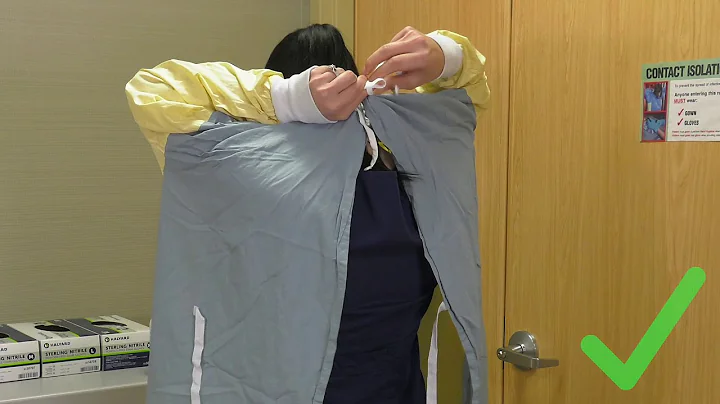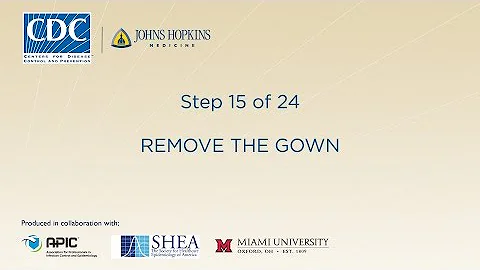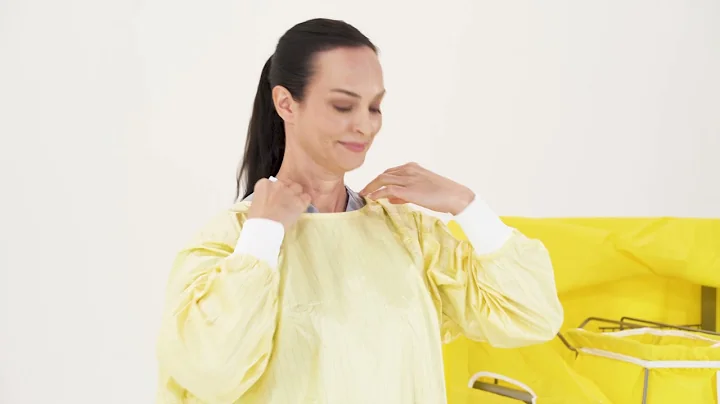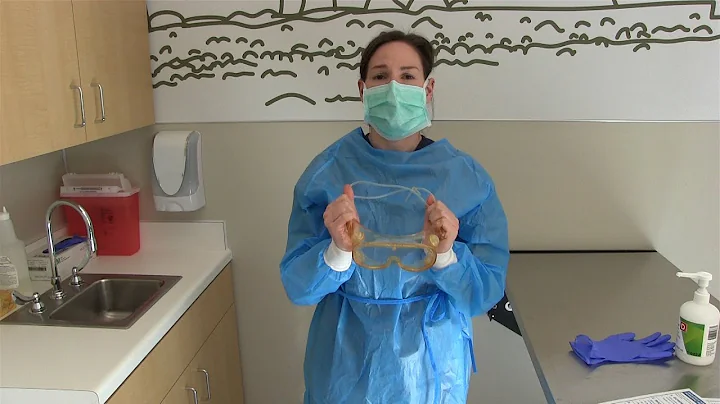What are the steps for putting on and taking off isolation gowns? masters the correct steps for putting on and taking off isolation gowns, effectively improving the physical protection of the user. The isolation gown is a protective garment mostly used to protect staff and patients, prevent the spread of pathogenic microorganisms , and avoid cross-infection . If you put on and take off the isolation gown incorrectly, you will not only not be protected, but you will also be infected by the source of the disease. Today, the editor of Shenwan will tell you the steps and precautions for putting on and taking off isolation gowns.

Steps to put on the isolation gown:
1. Take off the isolation gown by holding the gown, face the clean side of the isolation gown toward you, the contaminated side outwards, fold the two ends of the collar outward, align the acromion , and expose the inner opening of the rotator cuff.
2. When putting on a sleeve, hold the collar with one hand, put the other hand into one sleeve, raise your arm, and put on the sleeve; change the hand holding the collar, and put on the other sleeve according to the above method.
3. To tie the collar, hold the collar with both hands, straighten the collar edge from front to back, and button the collar.
4. Tie cuffs and fasten cufflinks or cuffs, and tighten the cuffs with rubber bands if necessary.
5. Tie the belt and gradually pull the isolation gown forward from about 125px below the waistband on one side of the garment. Pinch the edge of the garment when you see it, and then pinch the other edge of the garment in accordance with the law. Align the edges of the clothes with both hands behind your back, fold it to one side, hold the fold, cross the belt behind your back, and tie it with a slip knot in the front.
Steps to take off the isolation gown:
1. Untie the belt and tie a slip knot in the front.
2. Untie the cuffs and tuck part of the sleeves into the overalls at the elbow to expose the forearm.
3. After disinfecting and washing your hands, scrub your forearms to your fingertips sequentially for two minutes, rinse with water, and dry them;
4. Untie the collar, put one hand into the cuff on the other side, pull down the sleeve and pass it over your hand (use a clean hand to pull the inside of the cuff Clean side), use the covered hand to pull down the other sleeve on the outside; align the sleeve with both hands inside the sleeve, and gradually withdraw the arms.
5. Hold the collar with both hands, align both sides of the isolation gown (for example, if the isolation gown is hung in a semi-contaminated area, the clean side will be outward; if it is hung in a contaminated area, the contaminated side will be outward), and hang it on the hook.
Precautions when putting on and taking off isolation gowns:
1. The isolation gown must be of appropriate length and must completely cover the overalls.
2. The isolation gown should be changed daily. If it is damaged, wet or contaminated, it should be replaced immediately.
3. Avoid contaminating the collar and clean surface when putting on and taking off the isolation gown, and always keep the collar clean.
4. After wearing isolation, keep your arms above the waist and within sight; do not enter the clean area and avoid contact with clean items.
5. When disinfecting hands, the isolation gown must not get wet, and the isolation gown must not touch other objects.
6. If the taken-off isolation gown is hung in a semi-contaminated area, the clean side will face outward; if it is hung in a contaminated area, the contaminated side will face outward.
7. Used isolation gowns should be disposed of in a centralized manner to avoid expanding contamination.
Not only must we wear isolation gowns, but we must also wear masks, gloves, shoe covers, etc. for all-round protection, so as to ensure the health of medical staff.
The above is about the correct steps for putting on and taking off isolation gowns. I hope it will be helpful to you.





















